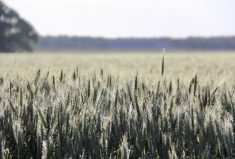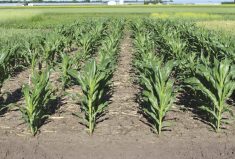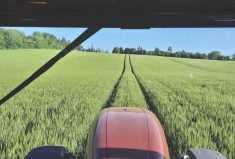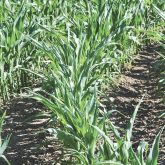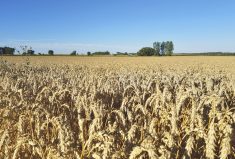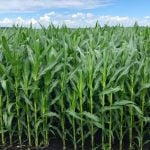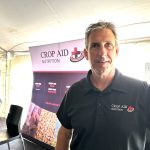It’s been an incredible 20 months for researchers working with wheat in Canada and around the world. In that time, the industry has seen the release of its first transgenic variety (a drought-tolerant wheat in Argentina), and it has also wrapped up more than 13 years of mapping the wheat genome.
The latter is a product of the 10+ Genome Project, a coalition of more than 95 scientists from Canada, the U.S., Germany, the U.K., Japan, Switzerland and others. The project mapped the DNA sequence of various varieties from different countries and is expected to pave the way to a new round of breakthroughs.
It’s against this backdrop that the profile for cereal breeding in Eastern Canada is on the rise. In 2013, University of Guelph’s Ontario Agricultural College, SeCan and the Grain Farmers of Ontario (GFO) partnered to fund the GFO wheat professorship at the University of Guelph, re-introducing a breeding program in the province. In August 2020, it was announced Dr. Helen Booker would succeed the late Dr. Alireza Navabi on faculty, and she’s spent her first year reviewing the available winter wheat lines and Navabi’s accomplishments in his five-year tenure.
Read Also

Could crop sharing be a viable option for your farm?
Crop sharing could be a good option for young and beginning farmers.
“For a successful breeding program, the momentum must be sustained,” says Booker, who returned to southern Ontario after leading the flax genetics and breeding program at the University of Saskatchewan. “Ali had to jumpstart the breeding program as there hadn’t been a wheat breeding focus for some time in plant agriculture (at Guelph). So he had an uphill battle to re-establish a winter wheat working collection.”
Initially, she adds, fixed or pure winter wheat lines were supplied through multi-party agreements with the university, then tested in Ontario, and if deemed suitable were brought forward for registration. From there, they were commercialized in the province through SeCan. In just a year, Booker and her team have been able to identify and restock the available lines.
“The breeding pipeline is now full and includes segregating populations and fixed (or pure) lines in preliminary or advanced yield testing,” says Booker. “It’s up to us now to keep the momentum going.”
One of the products of that process is OAC Constellation, the first Canadian eastern soft red winter (CESRW) wheat release. It’s been through three years of Ontario Cereal Crop Committee (OCCC) performance trials in the province and will be available from SeCan to growers as certified seed in 2022. SeCan is working collaboratively on two soft red wheat products from Booker’s program which have already been supported for registration: OAC 18-SRW-01 and OAC 19-SWR-01. SeCan multiplied seed of OAC 18-SWR-01 in 2021 and released OAC 19-SWR-01 to members for production this past fall.
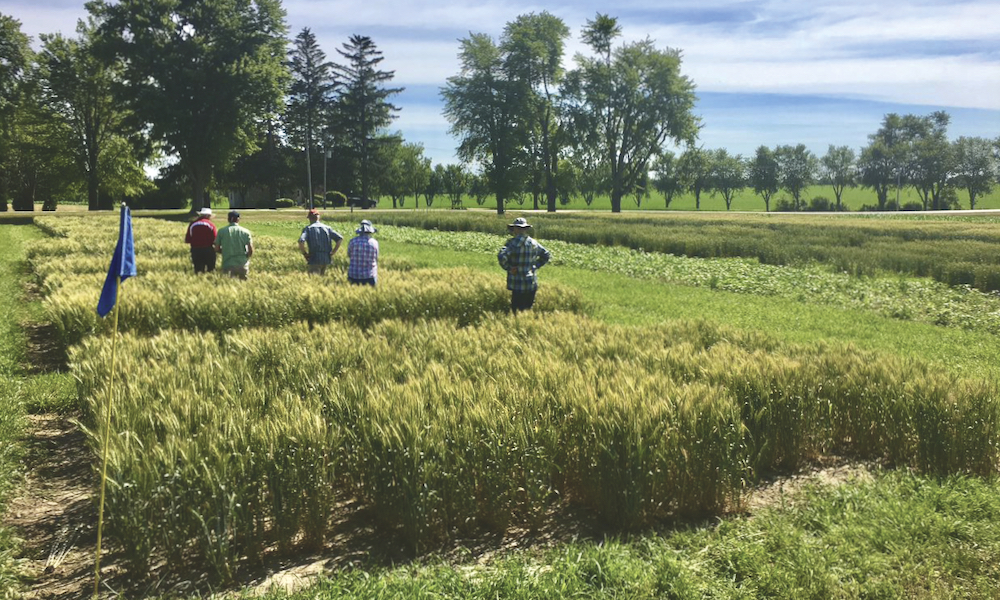
What’s really important
Booker and lead technician Micheal Pavone are studying winter survival and wheat pathology with fusarium head blight, rusts and powdery mildew, even though yield and yield stability are facets growers are most interested in.
“But it’s other factors such as winterkill and diseases that ultimately limit yield and reduce grain quality,” says Booker. “Winter survival is a limiting factor in some years and that’s what makes it difficult to breed for, so we’re collaborating with Dr. Eric Lyon’s Turf Lab to investigate the impacts of planting date, phosphorus and commercial variety.”
The disease research is a particular strength of the program and Booker has been using her connections at the University of Saskatchewan to test winter and spring cereals in registration trials. The work was done this past year at the Elora Research Centre to help Dr. Randy Kutcher’s program at the Crop Development Centre in Saskatoon.
There’s also an in-house capacity to test for deoxynivalenol (DON) and conduct visual assessments for fusarium-damaged kernels (FDK). Booker is trying to garner support for wheat pathology in the next Canadian Agricultural Partnership (CAP) funding cycle, from 2023 to 2028.
“I’d like to expand our disease testing capacity to include intentional nurseries for wheat rusts and powdery mildew,” she says. “At present, we’re reliant on natural infection to screen for resistance in breeding lines as a well as post-harvest sprouting under mist irrigation.”
Great potential
The multi-layered promise of the 10+ Genome Project is something Booker finds intriguing. The mapping of wheat’s three distinct genomes completed late in 2020 was a lengthy process covering a far more complex genetic structure (more than 16 million base-pairs in wheat versus three billion in the human genome). Yet that doesn’t complicate matters from Booker’s perspective: it provides unique opportunities among a large number of participants.
“What’s most impressive about the wheat research community is the open access to genomic data,” she says. “Even though the wheat genome is complex, there are many allele-specific markers for genes that condition things like photoperiod sensitivity and vernalization. There’s a lot of scope for improving selection efficiency using the developed trait-specific markers without the need for transgenics.”
She adds that since Canadian wheat is geared primarily for export (accounting for roughly 20 per cent of global trade), the cereal sector and the food value chain must consider the implications before opting for transgenics. Even gene-edited products require careful consideration from the outset.
Pavone, lead technician with Booker’s breeding program team, agrees with the potential of increasing selection efficiency and the use of molecular markers. Although it’s not a focus of their program in the immediate future, early generation screening of materials is something they’ve discussed.
“By selecting for disease resistance earlier in the breeding cycle, we would be able to increase our program while also testing higher-quality material in yield trials, three or four years later,” says Pavone. He’s been with the University of Guelph program since March 2021 and has worked in plant breeding since 2002. “The impact would also be felt by growers having much greater disease resistance packages available in their wheat varieties.”
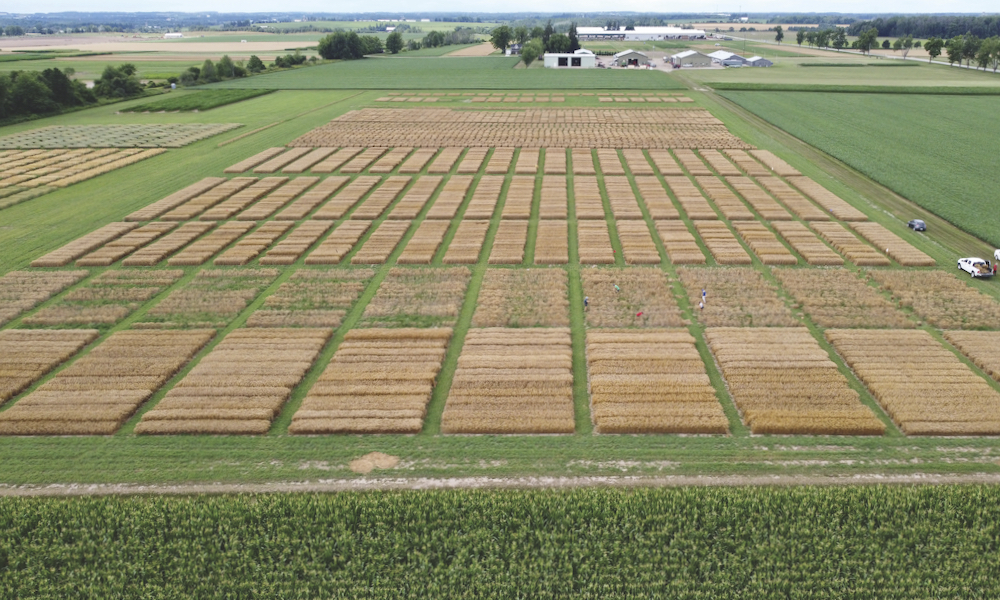
Although he started working in winter and spring canola along with sweet potato and greenhouse tomato breeding, joining Booker’s program is providing Pavone with his first opportunity to work in wheat. Breeding and research on wheat is extensive in the public and private sectors, yet there is still a lot of work to be done to get the breeding efficiency in wheat to the same level as corn, soybeans and canola. There’s also the opportunity to develop specialty end-use market classes that are unique and not commonly seen in other crops.
“I also agree with Helen that export markets and transgenics are a challenging mix,” adds Pavone. “I don’t see a financial return for companies — private or public — to invest in transgenic wheat, especially winter wheat. The crop simply doesn’t have the weed or insect pressure that corn, soybeans and canola do. Nor does wheat have the same financial return as those crops, so the 10- to 15-year timeline for development is really hard to justify, financially.”
That “trickle-down” approach for larger agri-business interests tends to leave cereals in Eastern Canada under-supported from a private sector perspective. Yet far from being pessimistic about what the sector doesn’t have, Pavone sees it as a testament to the public sector in identifying a need for growers and support from funding programs that give back in the same geographic region.
“Being publically funded also means getting to explore projects that may not have the return on investment required by private companies,” he says, citing the example of using cereals as cover crops.
Get it growing
As part of the value chain that puts the results of the program at Guelph into the hands of growers, Willie Vanderpol echoes many of Pavone’s sentiments about the difference between public and private breeding programs. She also praises the arrival of Booker and what it means to future development in wheat varieties. Setting out to develop cultivars with very specific attributes for Ontario helps differentiate public programs with primary breeding activities here from private companies which screen material from other sources.
“The goals of cereal breeding programs in the U.S. and elsewhere may not align with all of the attributes growers need in successful cereal products in Ontario,” says Vanderpol, market development for Southwestern Ontario with SeCan. “In the process from initial crossing to breeder seed production, Helen’s team is solely focused on meeting Ontario grower and end-user needs.”
As important as yield is to growers, meeting the long list of milling requirements is a fundamental demand that breeders, millers and manufacturers must acknowledge. Equally important, adds Vanderpol, is maintaining a full breeding pipeline, something Booker stressed right from her first day. And with Pavone’s contributions, Vanderpol is confident the discovery of new wheat varieties that have value within the food chains will continue.
“Ultimately, it would be of benefit to all public winter wheat breeders if they increased collaboration,” Vanderpol says. “With a decreasing amount of government funding being directed to variety finishing work, collaboration is important to share resources and to maximize return on the funding dollars available.”




